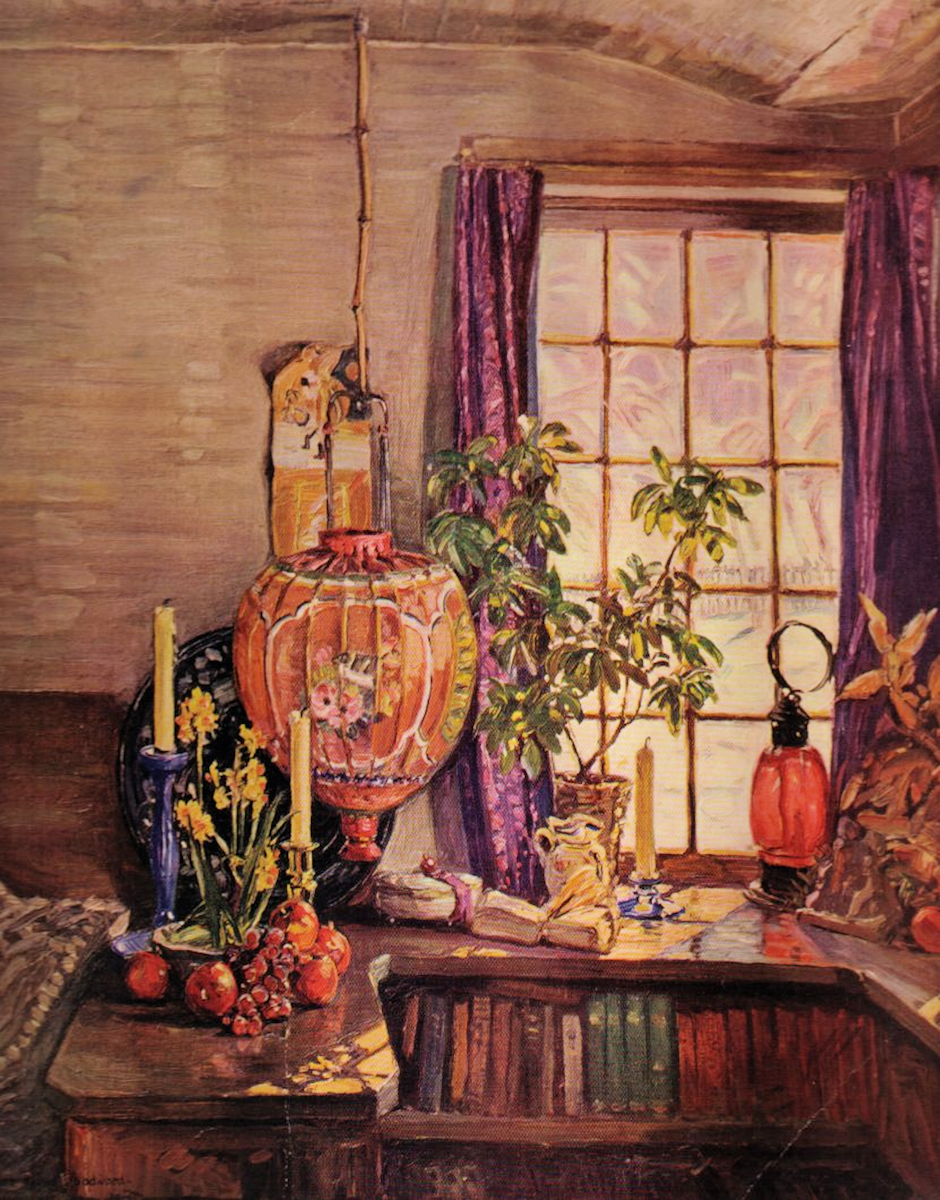Quick Reference
Painted before 1928
Oil on Canvas
Landscape
Window Painting
Unknown
J. H. Miller Co. Galleries, 1928
Littlecote Gallery, Utica, NY, 1929
Myles Standish Gallery, 1929
Myles Standish Galleries, 1944
Mrs. W. Scott Fitz- lent the painting
for the 1929 Standish show.
NA
Related Links
- See also the...
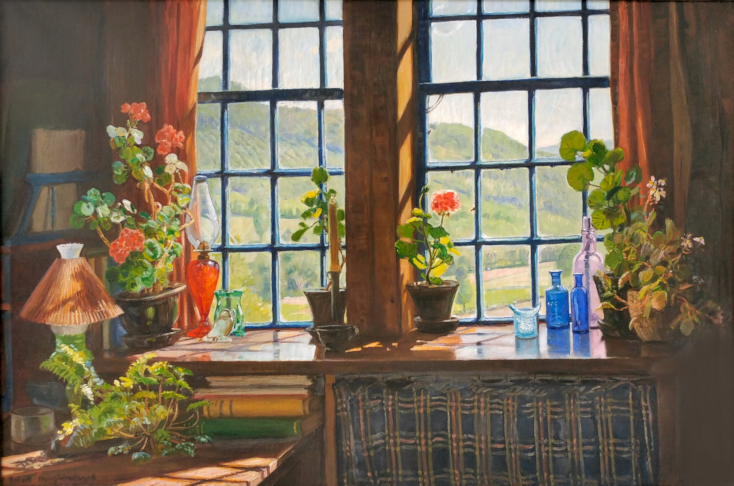 Window Picture Gallery to view related pieces.
Window Picture Gallery to view related pieces.
- See also the...
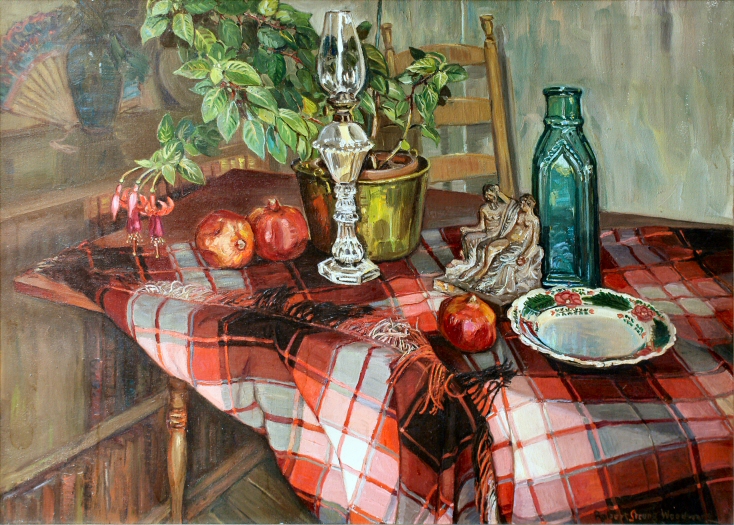 Still Life & Interiors Gallery to view related pieces.
Still Life & Interiors Gallery to view related pieces.
- See also the...
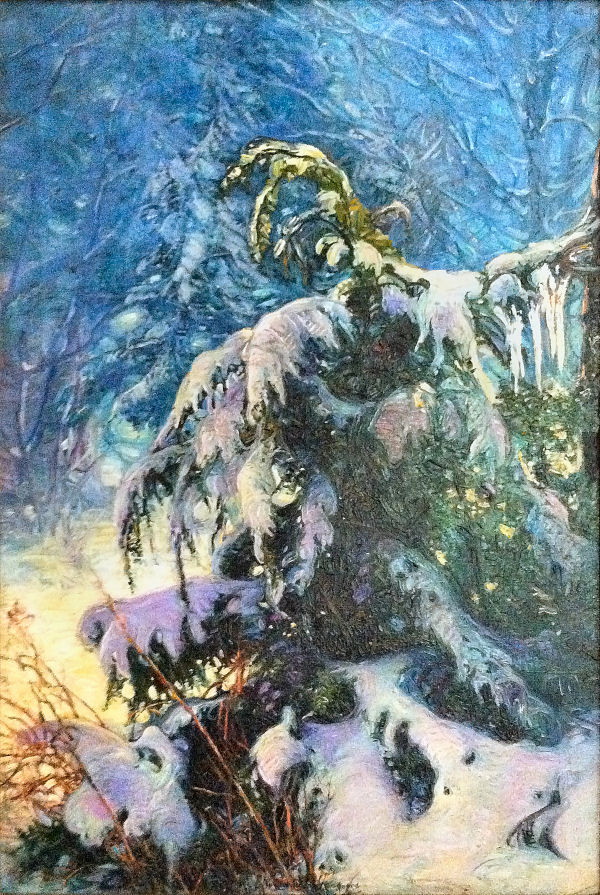 Snow on the Ground Gallery to view related pieces.
Snow on the Ground Gallery to view related pieces.
- See also the...
 Still Life & Interiors Gallery to view related pieces.
Still Life & Interiors Gallery to view related pieces.
- For more about the...
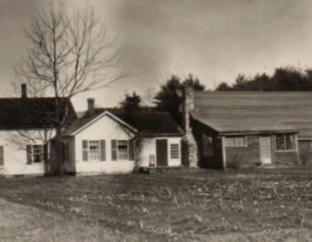 Hiram Woodward House & Studio, see our Scrapbook page.
Hiram Woodward House & Studio, see our Scrapbook page.
- See also the...
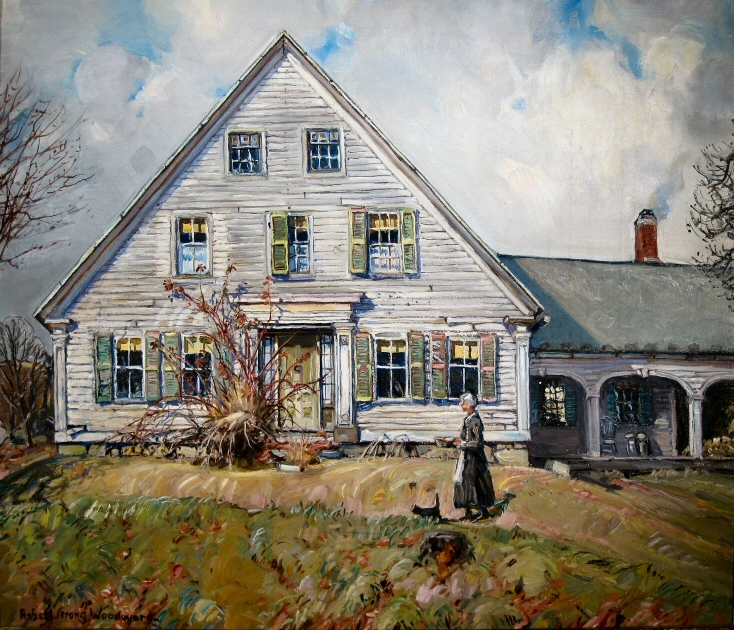 Houses Gallery to view related pieces.
Houses Gallery to view related pieces.
- See also the...
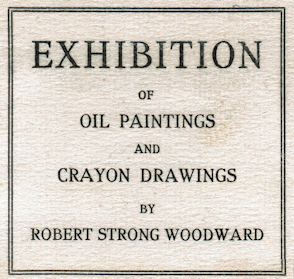 Exhibition List for a complete list
Exhibition List for a complete list
- See also RSW's ...
 Famous Owners Gallery
Famous Owners Gallery
Other Hiram Studio
Window Pictures and
Still Life paintings
with windows
- The Window; A Still Life and Winter Scene (1925)
- Open Tulips (1930)
- My Winter Shelf (1926)
- Unnamed: From My Winter Shelf (unknown)
- Studio Window (unknown)
- Against an India Print (1932)
- Apples and Silk (1932)
- My Grandmother's Lamp (1932)
Featured Artwork: The South Window, 1928
RSW's Diary Comments
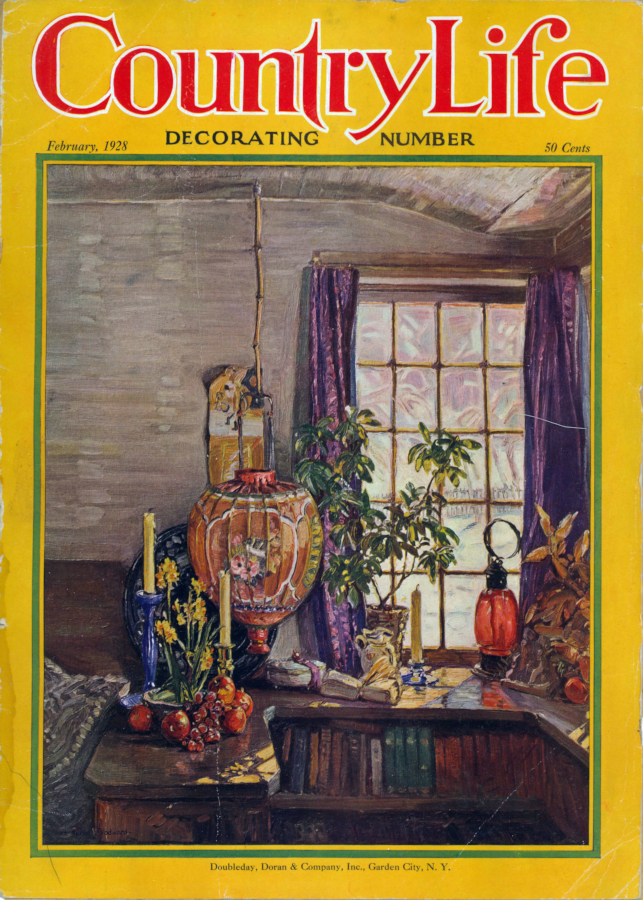
 The cover of Country Life, February 1928
The cover of Country Life, February 1928
Woodward claims in his diary comments that
the painting is From My Studio Window, but
it is in fact, The South Window.
For the full size PDF CLICK HERE
Woodward's Diary Comments for From My Studio Window:
"Painted prior to 1928. A window picture made in the old studio that burnt in 1933 having the couch arm and the Chinese lantern in it. Published in color on the cover of "Country Life in America", February 1928. Bought from one of my Boston exhibitions by Mrs. W. Scott Fitz, but upon her death this canvas passed into the possession of her son, Edward Jackson Holmes, of 296 Beacon St., Boston, grandson of Oliver Wendell Holmes."
Editor's Notes and Corrections:
 First let us state clearly that the image used for this page is the only
we have of this painting and is taken from the 1928 February cover of Country Living and has been proven to actually be The South Window.
First let us state clearly that the image used for this page is the only
we have of this painting and is taken from the 1928 February cover of Country Living and has been proven to actually be The South Window.
 While Woodward attributes his diary remarks to the painting named From My Studio Window,
we have discovered new information that proves he was mistaken. Woodward mixed up
From My Studio Window with the painting The South Window. He did not start to assemble his "Painting Diary" until
the early 1940s and he did so almost entirely from memory.
While Woodward attributes his diary remarks to the painting named From My Studio Window,
we have discovered new information that proves he was mistaken. Woodward mixed up
From My Studio Window with the painting The South Window. He did not start to assemble his "Painting Diary" until
the early 1940s and he did so almost entirely from memory.
It may seem that his mistake is egregious but we want to
point out what the two paintings have in common. Both paintings are from the Hiram
Woodward studio corner window but from different perspective. Both paintings were loaned to both the 1929 and 1944 Myles
Standish Gallery exhibitions by their respective owners. Both owners were well know collectors and patrons of art and members of Boston society 's
elite as well as solid supporters of Woodward's career. It is really the insurmountable differences of the two paintings that helped us find the mistake.
 The South Window is a 36" x 30" upright and From My Studio
Window is a square-ish, 25" x 30" landscape painting. From the aspect ratio alone this means that From My Studio Window CANNOT
be the painting that appears on the cover of the February issue of Country Living magazine! This has been confirmed mathematically using the full version
of the 1929 photograph of the Myles Standish showroom where The South Window hangs next to the 40" x 50"
Top of the Pasture.
The South Window is a 36" x 30" upright and From My Studio
Window is a square-ish, 25" x 30" landscape painting. From the aspect ratio alone this means that From My Studio Window CANNOT
be the painting that appears on the cover of the February issue of Country Living magazine! This has been confirmed mathematically using the full version
of the 1929 photograph of the Myles Standish showroom where The South Window hangs next to the 40" x 50"
Top of the Pasture.
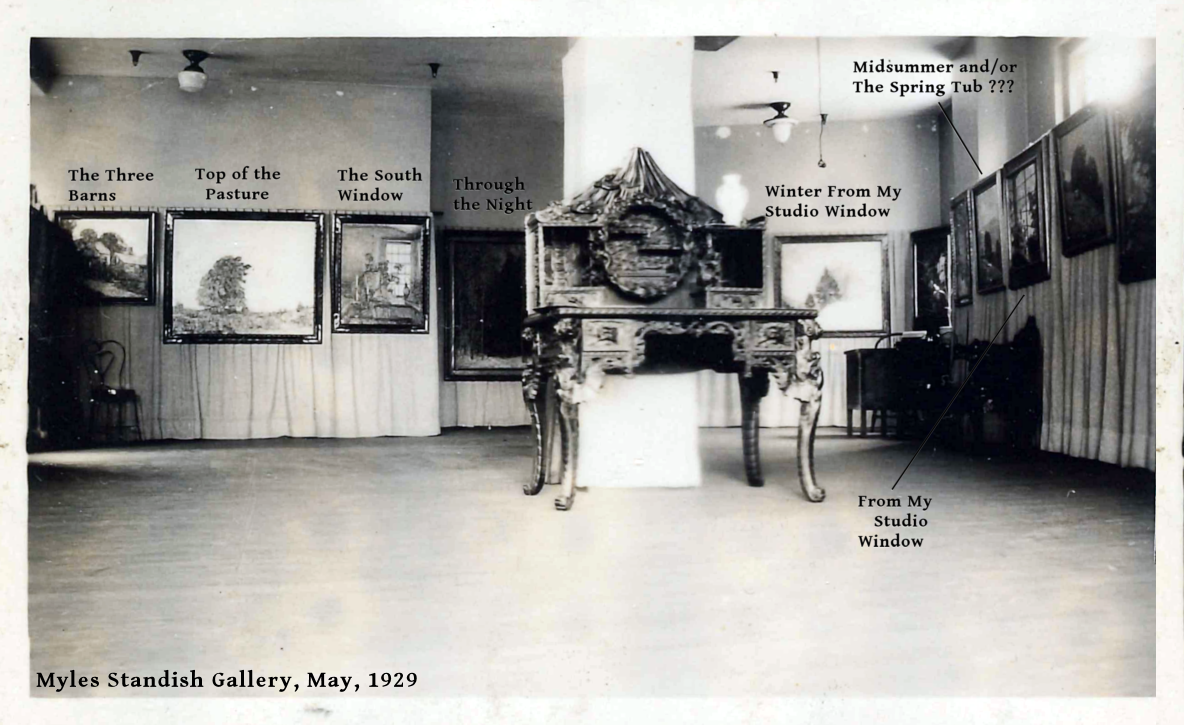
 A photograph from the showroom of the 1929
A photograph from the showroom of the 1929
Myles Standish Gallery Exhibition. It would be Wood-
ward's first of many - the most prominent shows be-
ing, this one, the 1931, and 1944. Woodward would
have a very close relationship with the hotel, often
leaving paintings hang in the hotel's dinning room
or lobby for years at a time.
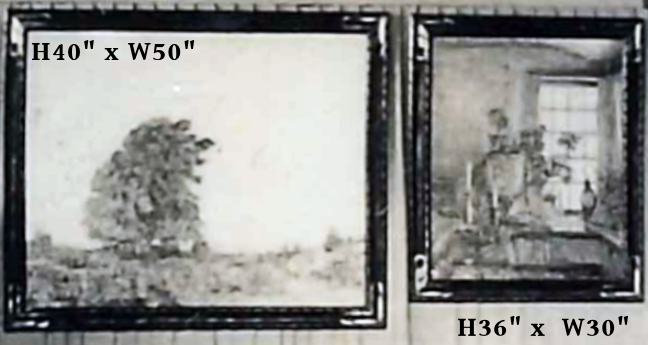
 Top of the Pasture and The South Window side
Top of the Pasture and The South Window side
by side. There is no disbuting the size. Both paintings
have mutliple references to their size and we know
where Top of the Pasture is located and have con-
firmed its size. So using those parameters we can deter-
mine the size of the painting next to it. We can grab a
capture of The South Window in a photo editor
and blow it up to a near perfect H36" x W30" size.
Additional Notes
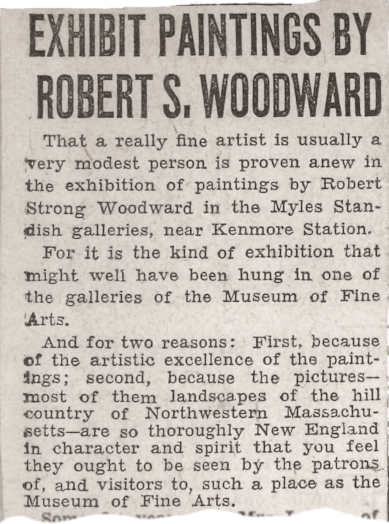
 May, 1929, Boston Globe review
May, 1929, Boston Globe review
by A.J. Philpott re: The Myles Standish show
To see the entire article CLICK ON
the image of the clipping...
Boston Globe, May, 1929, by A. J. Philpott.
"A number of his paintings have been lent by their owners to this exhibition, among them 'Silent Evening' and 'In the Hills,' by Mr. and Mrs. George E. Dresser; 'South Window,' by Mrs. W. Scott Fitz; still others by Mr. John T. Spaulding, Mrs. H.P. King and Dr. and Mrs. B. Thurber Guild."
More on this painting's name:
The way Woodward's Hiram Woodward studio was set up was a custom design by the artist. He but a high value on the traditional "artists' north window" and selected where he chose to have his studio built. The shed ran north to south from the rear of the main house. On the northwest corner of the large shed, Woodward had its roof extended to created the windows and entrance to his studio.
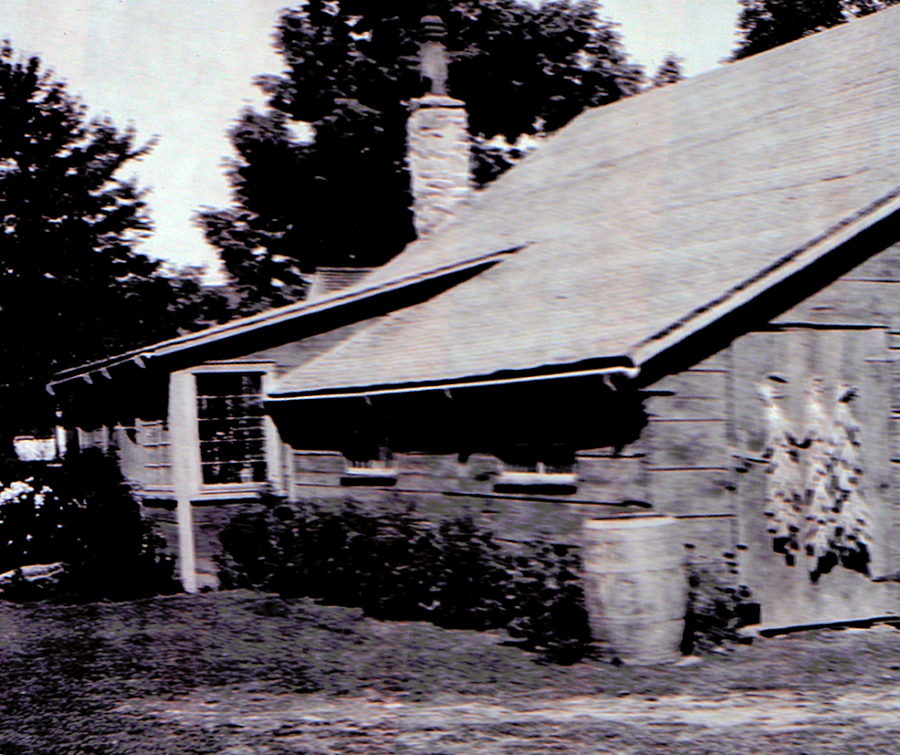
 A picture of the Hiram studio extension looking north.
A picture of the Hiram studio extension looking north.
The window you see is the exterior of the "south window".
The picture to the left shows this extension from the rear of the shed looking north. The studio had a 22-pane north window opposite the south window seen in the photo. There were two corner windows on both ends and a doorway in the middle. As far as we know, Woodward never painted the other corner window. It is likely because it was the neutral natural light of the north that was the backlight he preferred.
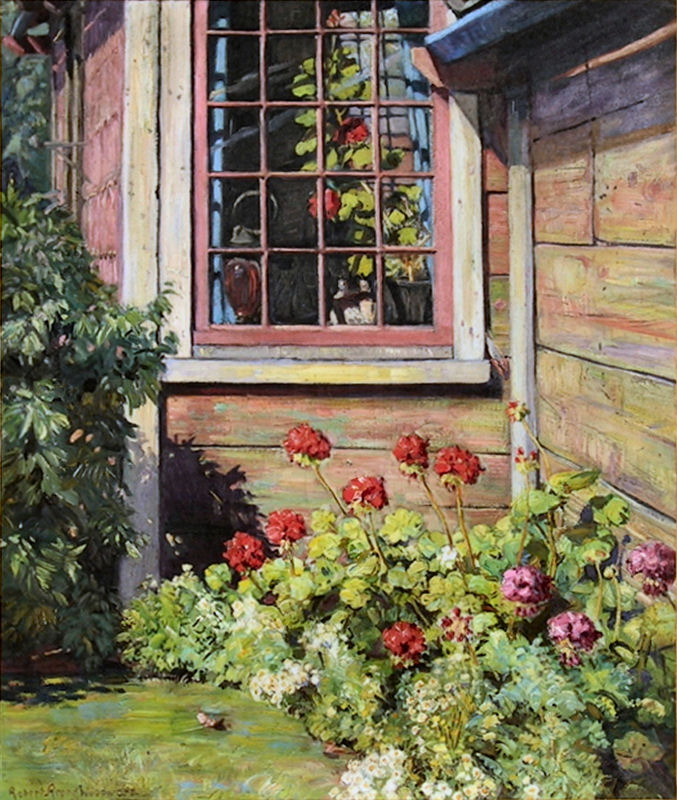
 Under the Summer Window, 1932
Under the Summer Window, 1932
From outside the south window. You can
see the red skater's lamp in the corner
Not only was the painting's name quite literal, but Woodward was also being very specific as he was often apt to do. Thus, nothing other than the south window could be considered. The artist is distinguishing there is a difference between his "studio window" (the corner) and the window facing south.
 Mrs. W. Scott Fitz is the second wife of Oliver Wendell Holmes Jr. Mrs. Scott and Holmes bought
a number of paintings from Woodward in his career. This painting, as well as, Dusty Rafters were both
lent by Mrs. Fitz's son Edward to exhibit at Woodward's special 1944 Myles Standish Galllery and Hotel finale show. A collection of the artist's most loved and
prized paintings. The 1929 show would be RSW's first at Standish, and 1944 the last for the hotel before it closed.
Mrs. W. Scott Fitz is the second wife of Oliver Wendell Holmes Jr. Mrs. Scott and Holmes bought
a number of paintings from Woodward in his career. This painting, as well as, Dusty Rafters were both
lent by Mrs. Fitz's son Edward to exhibit at Woodward's special 1944 Myles Standish Galllery and Hotel finale show. A collection of the artist's most loved and
prized paintings. The 1929 show would be RSW's first at Standish, and 1944 the last for the hotel before it closed.
Bonus Material: From Dr. Mark
Testimony from Dr. Mark Purinton:
"RSW was very fond of Chinese lanterns. There are a dozen or more in one of the Southwick Studio
drawers. I was unable to find one among these which was identical to the one in this painting, Studio Window, but
the image below is of one of those still remaining in the studio. He seldom actually used these during my days of working for him
(I think he used them more frequently at the Hiram Woodward studio where the above painting was made). However, on
occasion, such as a Studio Supper, he would have us "un-squeeze" one or two from their resting positions, put a few small stones
in the bottom to hold them down and put in a small candle which would be lighted during the supper hour. None ever caught fire,
but we always worried about them."
MLP
Dr. Mark worked for Woodward from 1940 through 1950,
intermittently, between serving in the Air Corps after high school and afterwards attending Oberlin College in Ohio. The two became
very close and Woodward was so fond of Dr. Mark he considered him the son he never had.
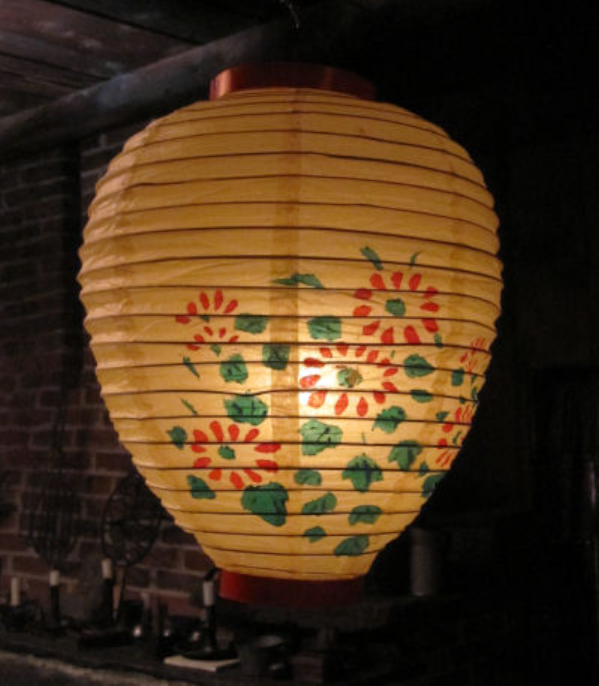
 A Chinese lantern hanging in the
A Chinese lantern hanging in the
Southwick studio.
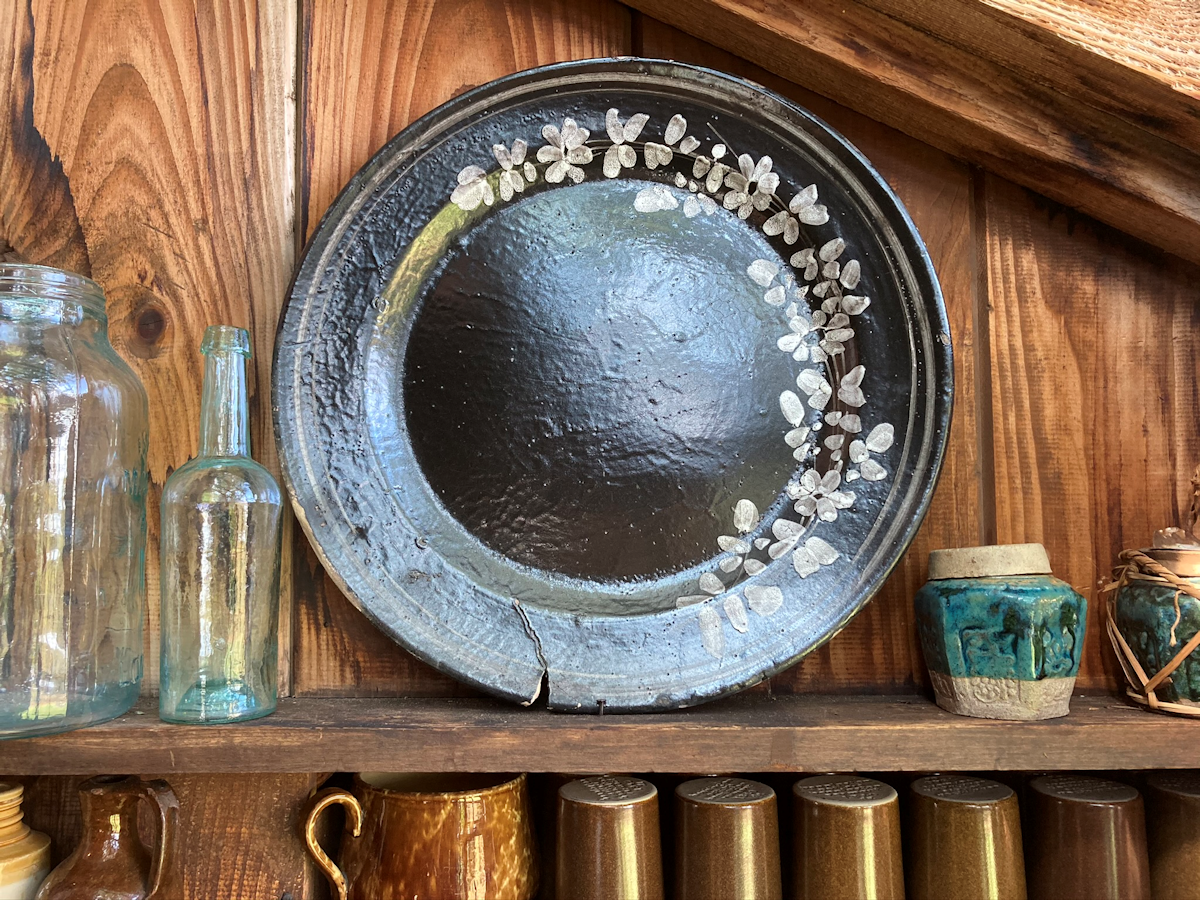

.png)

